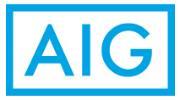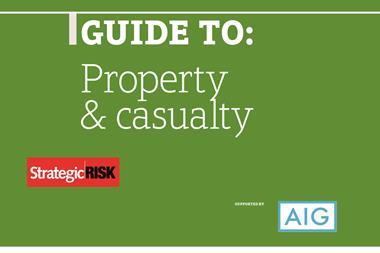The insurance industry is undergoing a revolution – technological advancements are transforming how claims are processed, putting an end to labour-intensive systems
Part of a property and casualty series supported by


Europe-based manufacturer discovered recently, the value of a policy often becomes evident only after a company has suffered a loss and made a claim. Managers at the firm in question were shocked to discover that the company’s insurance covered only 85% of what turned out to be a substantial claim. As a result, the balance had to be met from the company’s financial reserves.
What happened to the company is common: it had bought off-the-shelf protection, which then failed to meet its full and complex requirements.
The multinational’s experience illustrates two important developments in the insurance industry: the transformation that is occurring in claims-handling and the trend towards bespoke solutions. The latter, in particular, are designed to work to the advantage of bigger, continent-straddling companies with particularly complex issues.
As Nicolas Berg, AIG’s head of casualty EMEA, points out, a number of macro trends are combining to reshape entire economies. “Increased globalisation, urbanisation, the rise of a new middle class, increasing costs of healthcare: these are all long-term economic trends that the insurance industry needs to perceive as opportunities and to provide meaningful solutions for”.
A time like no other
Simultaneously, points out Berg, whose mandate covers 44 countries, the industry is seeing rapid progress in new technologies and applications that are leading to smarter, higher-performance products. “AIG believes this is a time like no other,” he enthuses.
The process of handling claims has lately taken several steps forward. As consulting firm McKinsey pointed out in a report earlier this year, the insurance industry has relied for too long on paper- based and labour-intensive systems for issuing and managing policies as well as for managing claims. The number of hand-offs between agents, adjusters and payments staff was time-consuming and, for clients, frustrating in terms of delays.
Reform was clearly overdue. It has come in the form of IT-based solutions that streamlined the entire process, but especially in respect of claims. “New claims management systems, for example, can automatically divide claims into clusters based on their complexity, their estimated value, and the risk of fraud”, McKinsey explains. “Some claims are paid automatically, others assigned to the appropriate adjustor. This approach improves cycle times, increases customer satisfaction, and reduces revenue leakage from fraud.”
No client could possibly complain about any of the above.
AIG embraced the revolution. Its agents in the field were equipped with electronic devices loaded with proprietary software and applications that enabled investigators of employer and general liability claims to compile a report in real time. However, this is only the beginning.
All relevant documents and physical evidence can be photographed or videoed and then embedded in the report. Statements by witnesses can be taken and signed on-site. In difficult claims, video- conferencing helps settle issues between customer, adjuster and investigator. Remarkably, most of these functions can be done directly from the site.
The returns came immediately. Instead of taking seven days on average, liability reports are now filed on the same day. Defence reports are returned within two days instead of 15 days, about seven times quicker. Further, witness statements are filed 10 times faster – that is, within two days instead of 20.
However, the rapid settlement of a claim triggers an even more creative process, namely the analysis of claims data for the purposes of mitigating losses. In the long run, this is mutually beneficial for the client and the insurer.
In conclusion
As for the manufacturer that suffered the unexpected 85% shortfall in its claim, unsurprisingly, it looked to another provider for its future insurance needs.
As is increasingly the case, the solution was bespoke – the wording, consideration of sub limits, higher customer retentions and various risk mitigation measures: all were reworked, to provide clarity and certainty of coverage.
The company will never be exposed in the same way again.
This article was taken from StrategicRISK’s guide to property and casualty supported by AIG. This guide can be viewed or downloaded here.




















No comments yet